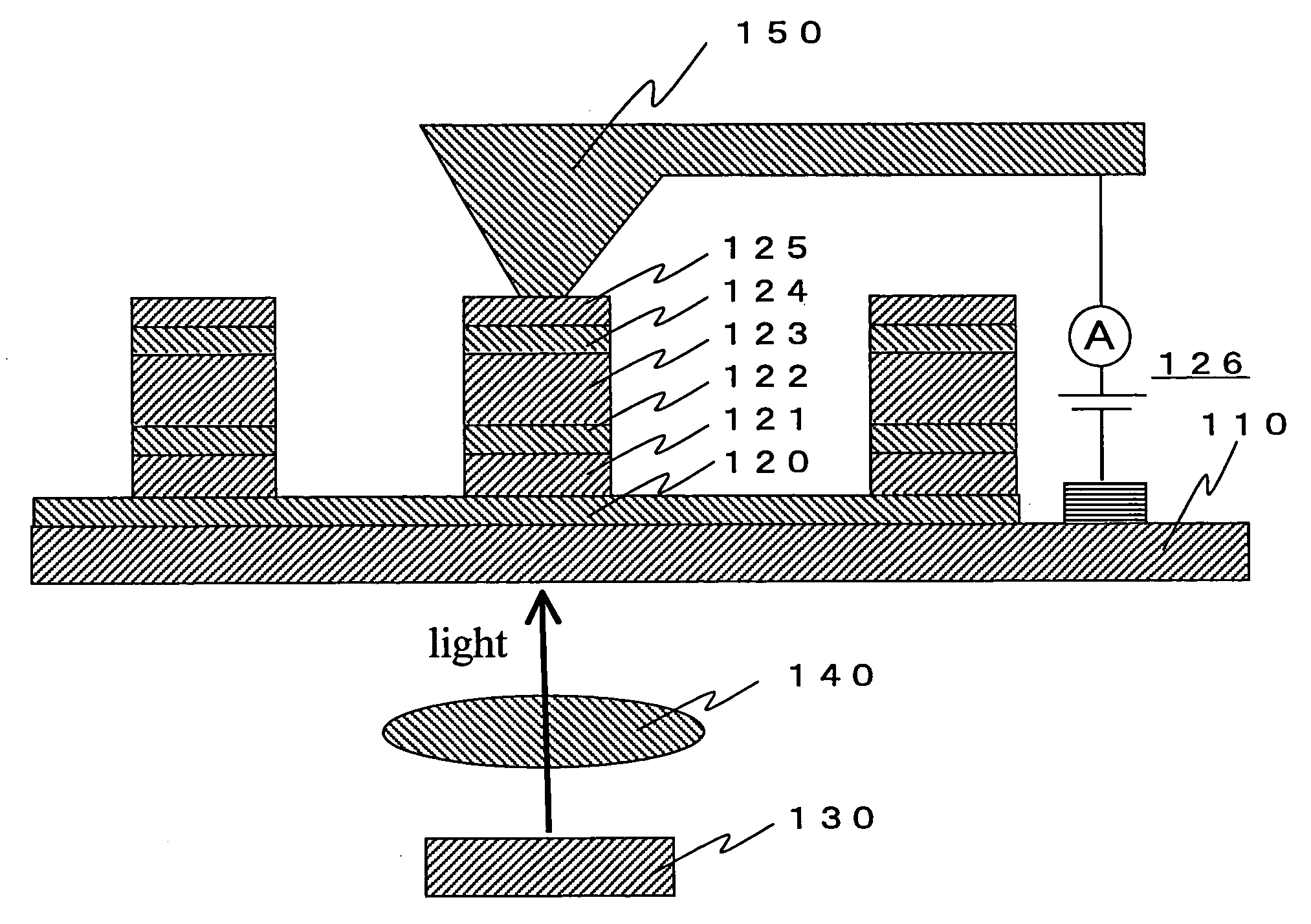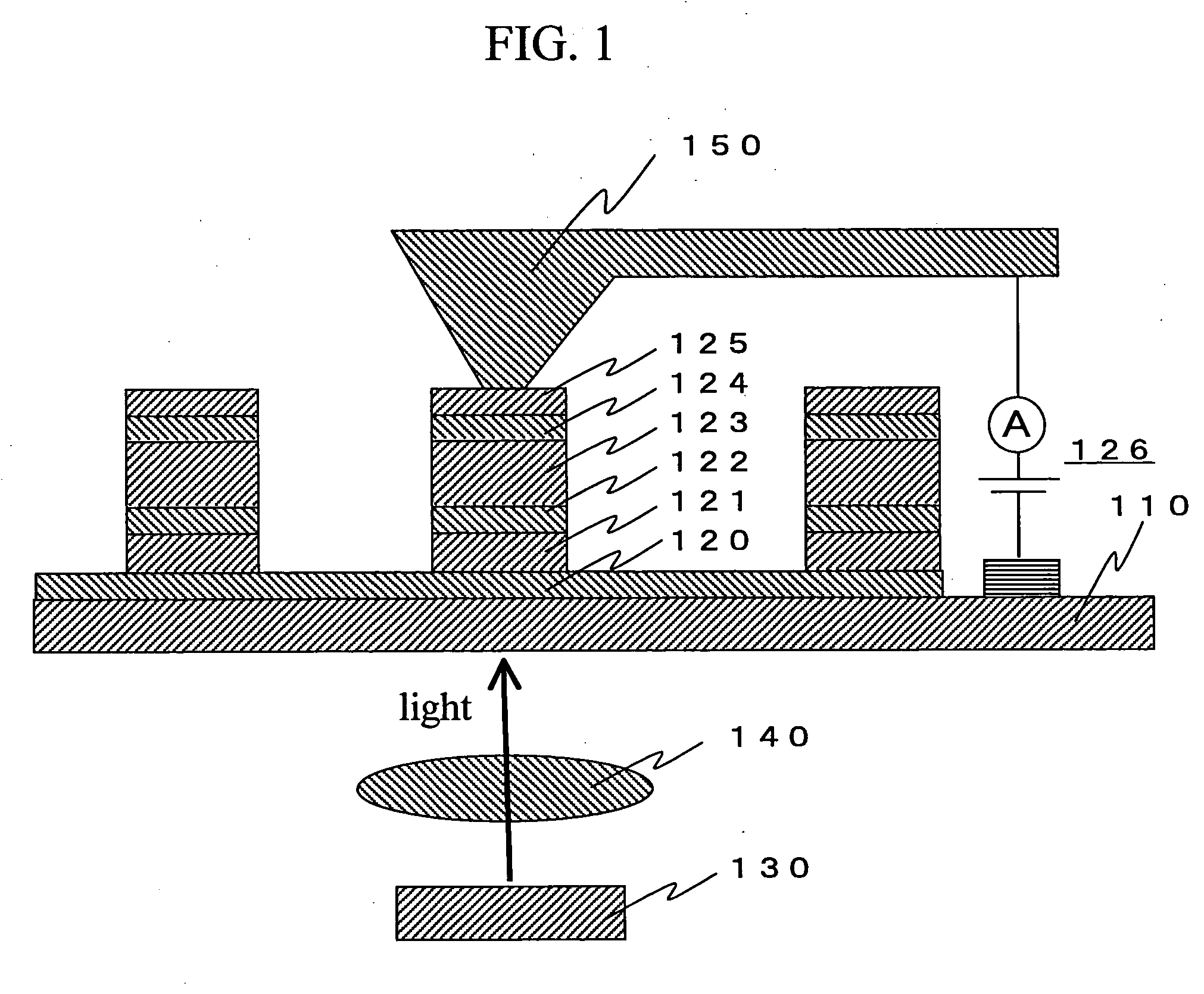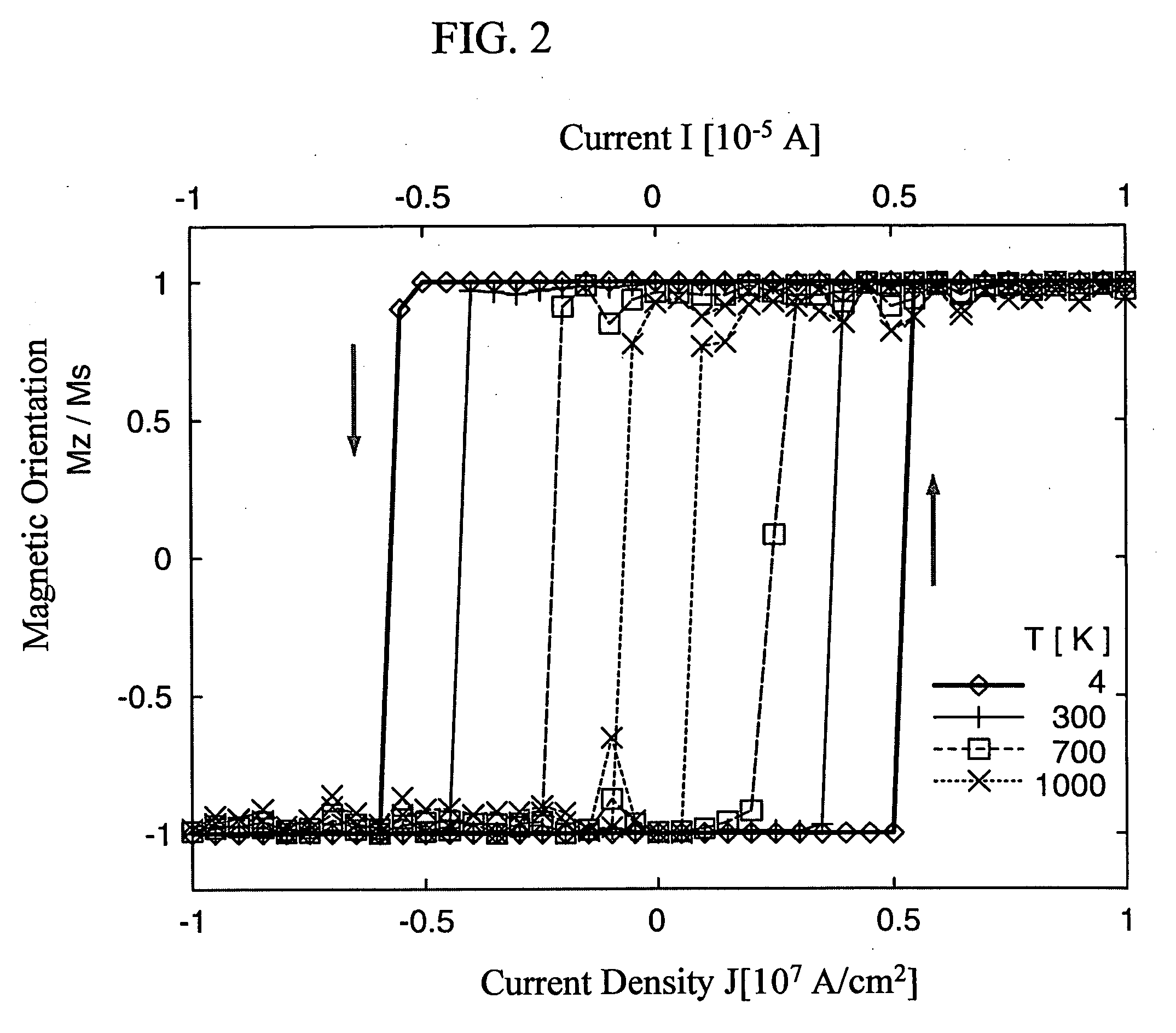Magnetic recording apparatus using magnetization reversal by spin injection with thermal assistance
a magnetic recording and spin injection technology, applied in the field of high density magnetic recording apparatus, can solve the problems of melting line, increased power consumption, and difficulty in writing to individual magnetic recording bits, and achieve the effect of reducing current density, high density, and effective lowering the coercivity of magnetic recording medium
- Summary
- Abstract
- Description
- Claims
- Application Information
AI Technical Summary
Benefits of technology
Problems solved by technology
Method used
Image
Examples
embodiment 1
[0021]FIG. 1 (cross section diagram) discloses a first embodiment of the present invention. On an electrode 120 composed of a metal film formed on a surface of a transparent glass substrate 110, a GMR element structure composed of a ferromagnetic metal layer (magnetization free layer) 121, a non-magnetic metal layer 122 and a ferromagnetic layer (magnetization fixed layer) 123 is formed. Further, on the GMR element, an antiferromagnetic metal layer (magnetization pinning layer) 124 to pin the magnetic orientation of the ferromagnetic layer 123 and a metal electrode 125 are formed. The layers 121 through 123 function as one magnetic memory cell. A magnetic recording apparatus has many such magnetic memory cells arrayed on the substrate. If the coercivity of the magnetization fixed layer 123 is enough large to stably maintain its magnetic orientation, the magnetization pinning layer 124 is not necessarily required.
[0022] Toward the back side of the above-mentioned substrate 110, a se...
embodiment 2
[0031]FIG. 3 (cross section diagram) discloses a second embodiment of the present invention. On an electrode 320 formed on a surface of a transparent glass substrate 310, a GMR element structure composed of a ferromagnetic metal layer (magnetization free layer) 321, a non-magnetic metal layer 322 and a ferromagnetic layer (magnetization fixed layer) 323 is formed. Further, on the GMR element, an antiferromagnetic metal layer (magnetization pinning layer) 324 to pin the magnetic orientation of the ferromagnetic layer 123 and a metal electrode 325 are formed. The layers 321 through 323 function as one magnetic memory cell. A magnetic recording apparatus has many such magnetic memory cells arrayed on the substrate. If the coercivity of the magnetization fixed layer 323 is enough large to stably retain its magnetic orientation, the magnetization pinning layer 324 is not necessarily required.
[0032] Toward the back side of the above-mentioned substrate, a semiconductor laser 330 and an o...
embodiment 3
[0037]FIG. 5 (cross section diagram) discloses a third embodiment of the present invention. On an electrode 420 formed on a surface of a non-magnetic substrate 410, an antiferromagnetic metal layer (magnetization pinning layer) 421, a trilayer GMR element structure composed of a ferromagnetic metal layer (magnetization fixed layer) 422, a non-magnetic metal layer 423 and a ferromagnetic layer (magnetization free layer) 424, and then a metal electrode 425 are formed. The layers 422 through 424 function as one magnetic memory cell. A magnetic recording apparatus has many such magnetic memory cells arrayed on the substrate. If the coercivity of the magnetization fixed layer is enough large to stably retain its magnetic orientation, the magnetization pinning layer 421 is not necessarily required.
[0038] With reference to FIG. 5, means to supply a current to a magnetic memory cell while heating it is described below. A probe-shaped optical fiber (hereinafter denoted as the probe) 430 has...
PUM
 Login to View More
Login to View More Abstract
Description
Claims
Application Information
 Login to View More
Login to View More - R&D
- Intellectual Property
- Life Sciences
- Materials
- Tech Scout
- Unparalleled Data Quality
- Higher Quality Content
- 60% Fewer Hallucinations
Browse by: Latest US Patents, China's latest patents, Technical Efficacy Thesaurus, Application Domain, Technology Topic, Popular Technical Reports.
© 2025 PatSnap. All rights reserved.Legal|Privacy policy|Modern Slavery Act Transparency Statement|Sitemap|About US| Contact US: help@patsnap.com



